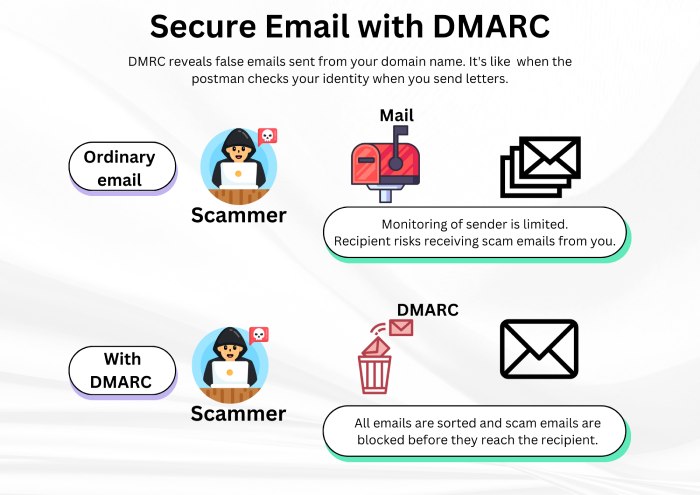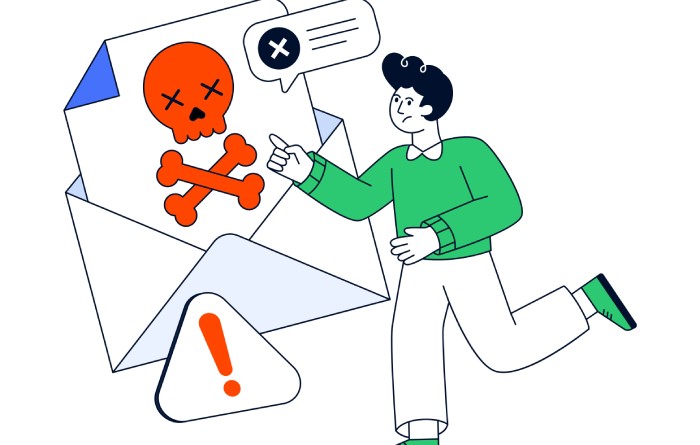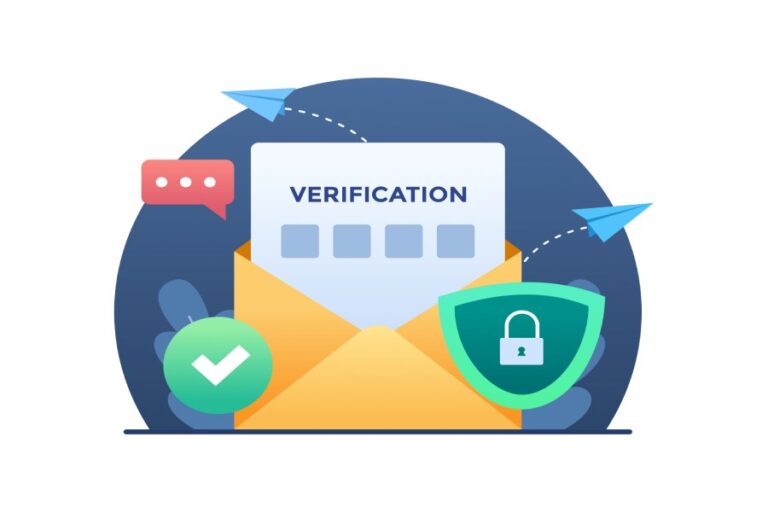Unlocking the Power of DMARC: Shielding You and Your Customers from Phishing Attacks
Organizations and their customers are always facing the rising threat of phishing attacks. This article looks at DMARC and shares how businesses can leverage DMARC to protect the organization and its customers against phishing.
With phishing cases on the rise with new campaigns hitting the digital world every other week, individuals must protect themselves and their businesses from phishing attacks. Aimed at stealing login credentials and sensitive information, phishing can be significantly reduced with DMARC (Domain-based Message Authentication, Reporting, and Conformance).
How so? Join us as we delve deep into DMARC and share how it can help you and your organization or business protect against phishing.
What is a Phishing Attack, and How Does DMARC Help Against it?
A phishing attack is where threat actors trick innocent individuals by sending them fake emails containing malicious URLs (Uniform Resource Locators) and attachments designed to steal login credentials or financial information.
But how does it connect to DMARC? Domain spoofing is typically the first step in many phishing attacks where emails are faked. A threat actor spoofs your email or domain name, sending emails with phishing links to your clients. The customer believes that the spoofed email is legitimately from your organization and ends up clicking on these links, getting phished.
This is precisely where DMARC comes into play, as it can help reduce direct-domain spoofing attacks and protect your customers from phishing.

Why Do You Need DMARC?
Phishing is not just limited to stealing usernames or passwords but has become the primary vector for initial access for ransomware gangs and espionage threat actors. Every organization in the world faces the threat of phishing attacks.
Did you know that Q4 2022 witnessed 278 million unique phishing emails, breaking all records with a significant jump from Q4 2021’s 74 million? DMARC is a crucial weapon in your arsenal against phishing and related cyber threats and can reduce domain spoofing to maintain customer trust and protection.
How to Reduce Email Phishing with DMARC?
DMARC is a global standard that allows email senders to verify that the email is actually coming from where it appears to be coming from, which can help curb spam and phishing attacks.
Using the reject policy for DMARC is an effective solution for organizations to combat phishing and other email threats, such as direct domain spoofing. DMARC helps verify the origin of emails, preventing fake ones from being received or opened. Since a customer cannot read or interact with the phishing email, the chances of a phishing attack affecting the customer or organization are slim. Let us see how you can do it.
- Understand DMARC: Gather knowledge about DMARC and how it can help you and your business combat spam and phishing emails.
- Implement SPF and DKIM: Once you know how to implement DMARC, its time to set up SPF (Sender Policy Framework) and DKIM (DomainKeys Identified Mail) that aid DMARC by authenticating your domain and preventing unauthorized email spoofing.
- Set the DMARC Policy: The next step is creating and publishing a DMARC policy for your domain. You should start with a “none” policy if you are new and getting to know DMARC. Afterward, you can switch to a “reject” policy.

And that is it. The reject policy stops all malicious emails that do not pass the DMARC authentication and will never reach the recipients. By implementing the reject policy, your customers are shielded from interacting with phishing emails.
When to Switch from “None” to “Reject” Policy?
Businesses must ensure they do not cut out the delivery letters important to the organization, so they must monitor all reports for a couple of weeks to highlight all the sources that send email letters on your behalf, such as third parties, task managers, user support systems, and more.
You can switch to a reject policy once you find these IP (Internal Protocol) addresses and domains from the aggregate DMARC report.
Is DMARC Sufficient as a Standalone Protection Against Phishing?
The short answer to the question is no. DMARC only can check and filter emails if they fail DMARC authentication. DMARC protects against domain spoofing, which helps protect against phishing, as threat actors misuse your organization’s domain name to send phishing emails to your clients.
However, DMARC cannot determine if an email contains a phishing link or if it comes with a malicious attachment, which is why business owners must take additional steps to safeguard their organization against phishing. You should invest in staff training, anti-phishing measures, and AI-powered tools.
Final Words
Taking a proactive approach to phishing and other cyber threats is crucial for businesses that wish to stay afloat today. Threat actors are skilled at social engineering tactics and constantly evolve them to harm organizations.
With DMARC, businesses can significantly reduce phishing and thwart the attacks of these cyber criminals. Furthermore, implementing DMARC combined with anti-phishing and anti spoofing measures can protect your organization and customers from all email threats.






